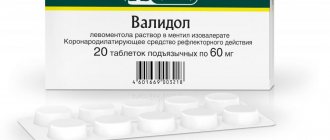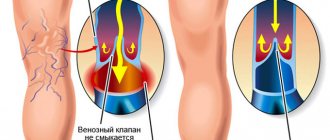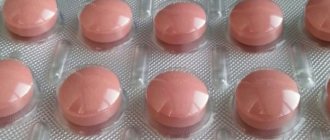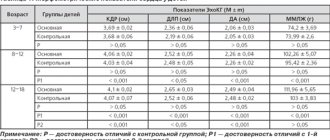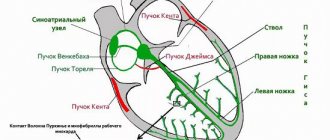In recent years, vein diseases have increasingly affected the younger generation. Most often women have to deal with varicose veins. The reason for this may be incorrect and uncomfortable shoes, high heels, childbirth and hereditary predisposition. Hemorrhoids can be called more of a male disease. It is usually encountered by representatives of the stronger sex who lead an unhealthy lifestyle, and those people whose professional activities involve sitting for long periods of time.
It is not only possible to treat such diseases, but also necessary. Otherwise, this may lead to the need for surgical intervention and very unpleasant consequences. From this article you will find out which is better - Phlebodia or Detralex. It is worth talking about the pros and cons of both drugs and drawing a conclusion about their effectiveness.
The active ingredient of both drugs
Which is better - Phlebodia or Detralex? Before answering this question, it is worth understanding the composition of the medications.
The main active ingredient contained in the drug Detralex is diosmin. Its amount in one tablet is 450 milligrams. This is approximately 90 percent of the entire composition. The capsules also contain hesperidin. Its amount is only 50 milligrams. In addition, the tablets contain glycerol, white wax, talc, magnesium stearate, gelatin and other components.
The drug "Phlebodia" includes the following components: diosmin in the amount of 600 milligrams. This substance is the main active one. The tablets have an additional composition, which also has a beneficial effect on the human body. However, these components are not considered medicinal.
The effectiveness of drugs and their effect on the patient’s body
Which is better - Phlebodia or Detralex? There is currently no consensus on this matter. Some specialists prefer to prescribe a proven and old drug (Detralex). Others prefer the new and more effective “Phlebodia”. What is the effect of these drugs on the human body?
The medicine "Detralex" and "Phlebodia" have a similar effect on the patient's veins and vessels. After using the drugs, angioprotective effects are observed. The walls of blood vessels and veins become stronger and more elastic. Capillaries reduce their permeability and are less likely to rupture.
Both agents thin the blood and help push it out of the veins of the lower extremities. Swelling and pain in the legs are relieved quite quickly. If the drug is used to treat hemorrhoids, it promotes the resorption of nodes and reduces pain during bowel movements. Which is better - Phlebodia or Detralex? Let's look at the pros and cons of these medications separately.
Phlebotonics in the treatment of chronic venous insufficiency of the lower extremities
Currently, practicing doctors are witnessing the rapid development of the pharmaceutical market in our country. New drugs, both foreign and domestic, appear quite regularly. The arsenal of pharmacological agents used to treat a particular disease is constantly growing, which creates certain difficulties in choosing them. The situation is even more complicated by the fact that different manufacturing companies, as a rule, give their names to drugs based on the same active ingredient. In this abundance of information, it is of paramount importance to know and highlight the main links in the pathogenesis of the disease, on the basis of which principles and treatment tactics are developed.
Today, the misconception about the omnipotence of drugs is becoming more and more widespread. There are many reasons for this, and it would not be an exaggeration to name the main one as the active advertising of a particular pharmacological drug by the manufacturer. As a result, many patients, especially older ones, take a dozen different medications, periodically getting confused about the dosages and frequency of their use, and with each visit to the doctor they change this “set of pills” and at the same time suffer very significant financial losses.
The problem of inadequate prescription of drugs has not escaped the treatment of chronic venous insufficiency (CVI) of the lower extremities. If just a few decades ago the surgical method of treatment was the leading one and, moreover, was considered the only one worthy of serious attention, now another extreme is often observed - attempts to present pharmacotherapy as the basis of treatment, and consider other methods of treatment as an addition to the “pharmacotherapeutic basis”.
Considering the above, we consider it necessary to determine the tactics for using modern phlebotropic drugs in patients with CVI of the lower extremities. Phlebotropic drugs are basic in the treatment of CVI. Of course, severe disorders of the outflow from the lower extremities necessitate the use of drugs from other pharmacological groups - disaggregants, non-steroidal anti-inflammatory drugs, antibiotics, enzymes, etc. However, their prescription should be approached with caution, and the period of their use should be clearly limited to the implementation of a particular task treatment.
The main goals of drug treatment for CVI of the lower extremities are: relief of symptoms of CVI, prevention of complications, prevention in risk groups, preoperative preparation, postoperative rehabilitation.
Based on the pathogenesis of CVI of the lower extremities, the objectives of conservative therapy can be presented as follows: increasing the tone of the venous wall, improving lymphatic drainage, influencing microcirculatory changes, correcting hemorheological disorders, relieving inflammatory manifestations.
As mentioned above, phlebotropic drugs are the basis of drug treatment for patients with CVI. This is a fairly large group of pharmacological drugs that have the ability to increase venous outflow from the lower extremities. This effect of phlebotropic drugs is achieved by summing up the effects on various parts of the microvasculature, and in many of them, by a direct effect on the contractility of the venous wall. Of course, the phlebotonic effect should be recognized as the main effect of phleboprotective drugs. However, they all have a polyvalent mechanism of action: they stimulate lymphatic drainage, have anti-inflammatory activity, and improve hemorheology. It is this feature, which allows influencing the main links in the pathogenesis of CVI, that has united many drugs into the group of phleboprotectors and made them basic in the conservative treatment of patients with CVI of the lower extremities.
When should phlebotropic drugs be prescribed? The indication for the use of phleboprotective agents is the presence of symptoms of CVI of the lower extremities. It is necessary to immediately warn doctors against a very common mistake. The development of acute disturbance of blood outflow during thrombosis of the veins of the lower extremities does not require the use of this group of pharmacological agents. Moreover, the use of phlebotonics should be considered contraindicated in patients with acute venous thrombosis. During an acute thrombotic process, the venous wall is less susceptible to phlebotonic effects, and its implementation will only aggravate acutely occurring blood outflow disorders.
In the future, in the case of the development of post-thrombotic disease, when the processes of post-thrombotic occlusion and recanalization in various venous segments are balanced, when pathological venous refluxes of blood are formed and, therefore, one or another degree of CVI occurs, the indications for the prescription of phleboactive drugs should be considered justified.
An absolute indication for the use of phleboprotectors are the so-called functional (orthostatic and hormone-produced) phlebopathies. In these cases, lifestyle changes with the exclusion of the producing factor, taking phlebotonics and elastic compression have a clear positive effect.
And finally, the use of phleboprotective drugs is certainly indicated for varicose veins of the lower extremities - a disease that is the most common cause of the development of CVI.
In patients with early stages of varicose veins, when there are no symptoms of decompensation of blood outflow yet, and aesthetic complaints prevail, the main purpose of using phleboprotectors is mainly to prevent the progression of the disease. It is advisable to prescribe phlebotonics to such patients in short (1–1.5 months) courses. The interval between courses of pharmacotherapy should be 3–4 weeks.
The appearance of edema of the lower extremities is a reliable sign of decompensation of blood outflow. In patients with edematous syndrome, the objectives of pharmacotherapy are: relief of manifestations of CVI (edema, heaviness in the lower extremities), improvement of lymphatic drainage, correction of microcirculatory disorders, prevention of disease progression. For patients with decompensation of blood outflow, phlebotonics are prescribed in longer courses (2–2.5 months). The time interval between courses should not exceed 1 month.
In patients with trophic disorders of the soft tissues of the lower extremities, special care should be taken when choosing a conservative therapy program. The severity of trophic changes in the skin dictates the need to prescribe drugs belonging to various pharmacological groups, and the stages of the wound process and the tendency of patients to allergic reactions dictate a careful individual selection of drugs. Indications for the use of various groups of drugs depend on many factors, including the stage and severity of the disease, and the risk of complications. Drug treatment should be prescribed depending on the phase of the wound process.
At the first stage, when manifestations of acute inflammation and destruction of soft tissues predominate, the main goals of using pharmacological drugs are to quickly eliminate the symptoms of inflammation and fight infection. During this period, therapy is carried out with non-steroidal anti-inflammatory drugs (diclofenac, indomethacin, ketoprofen, meloxicam, etc.), antiplatelet agents (acetylsalicylic acid, dipyridamole, clopidogrel), antihistamines (ketotifen, clemastine, promethazine), antioxidants (vitamin E, emoxypine, mildronate) . For a long time it was believed that the absolute indication for the use of antibiotics was the presence of a trophic ulcer of the lower extremities. Currently, views on this problem have changed somewhat. Indications for antibacterial therapy: extensive trophic disorders occurring with severe perifocal inflammation, the presence of purulent discharge from a trophic ulcer. Local use of antibiotics is currently recognized as ineffective. Taking into account the microbial landscape, the most effective antibacterial agents are semisynthetic penicillins, cephalosporins of the second and third generations, and fluoroquinolones. We consider the use of phlebotropic drugs during this period inappropriate.
Thus, the main goals of pharmacotherapy for CVI of the lower extremities in the stage of trophic disorders at the first stage are to relieve inflammation in the area of trophic disorders, treat complications, and stop the process of tissue destruction. Basic agents: antiplatelet agents, antibiotics, antihypoxants, non-steroidal anti-inflammatory drugs, antihistamines.
At the second stage, when the process of tissue destruction is stopped and the phenomena of acute inflammation are stopped, the main task of pharmacotherapy is the correction of microcirculatory disorders. At this stage, it is necessary to create conditions for the “start” of tissue regeneration, the transition from the catabolic phase to the anabolic phase. During this period, polyvalent phlebotropic drugs are prescribed, and the use of antiplatelet agents and antioxidant therapy is continued.
So, the main goals of pharmacotherapy for CVI of the lower extremities in the stage of trophic disorders at the second stage are: initiation of tissue repair processes, reduction of symptoms of venous insufficiency. Basic means: phlebotropic drugs, antiplatelet agents, antioxidants.
Complete relief of inflammatory manifestations and the beginning of active epithelization of the ulcerative defect indicate the success of the treatment, and at this third stage the main goal is to consolidate the achieved effects, and the main remedy is phlebotropic drugs.
It should be noted that effective treatment of CVI of the lower extremities is possible only by using an integrated treatment approach using surgical methods, elastic compression and modern pharmacological agents. Therefore, it is advisable to use phlebotropic drugs both before surgery and as part of postoperative rehabilitation treatment.
Below we will dwell in more detail on some modern phleboprotective drugs, our own experience of using which allows us to recommend them for use in the treatment of patients with CVI of the lower extremities.
The composition of the drug Detralex includes 450 mg of diosmin and 50 mg of hesperidin. The main mechanisms of action of this drug for CVI are: increasing the tone of the veins, stopping inflammatory reactions, stimulating lymphatic drainage, eliminating microcirculatory disorders.
According to our data, the use of Detralex in more than 250 patients with initial forms of CVI in most cases (83%) causes significant clinical improvement, and also has a positive effect on the hemodynamics of the veins and the efficiency of the calf pump. It is also necessary to note the high safety of this phlebotropic drug. Even with long-term (12 months) use of Detralex, side effects occurred extremely rarely; treatment tolerability was assessed as moderate to high by 93% of patients.
When studying microcirculatory blood flow using laser Doppler flowmetry, it was possible to reveal that by the end of the course of conservative treatment in patients with varicose veins, there was a significant increase in the studied indicator, indicating increased perfusion of soft tissues (Fig.).
| Drawing. Dynamics of the microcirculation index in the main and control groups at different periods of treatment |
The drug Ginkor Fort contains 14 mg of gingko biloba extract, 300 mg of troxerutin and 300 mg of heptaminol hydrochloride. Gingko biloba extract has an antioxidant, antihypoxic effect, realized by suppressing the synthesis and release of inflammatory mediators and oxidation reactions involving free oxygen radicals. The antiaggregation and angioprotective effect of the drug is due to the suppression of the production of phosphodiesterase, which leads to the accumulation of cycloguanidine aminophosphoric acid in smooth cells and a decrease in arteriolar tone. Troxerutin belongs to the group of rutosides. Its angioprotective effect is realized by blocking hyaluronidase and thereby achieving stabilization of hyaluronic acid, one of the main components of cell membranes and interstitial substance. Heptaminol, in addition to affecting the main factor of venous return - the “muscular-venous pump”, increases the contractile activity of the right chambers of the heart, promotes adequate blood oxygenation and protects the vascular endothelium from hypoxia.
An important feature of the drug Ginkor Fort is the possibility of its use in the second and third trimesters of pregnancy. Studies have confirmed the effectiveness of this drug, which is used to relieve symptoms of CVI during pregnancy.
Recently, a new phlebotropic drug, Antistax, has appeared on the domestic market. The active ingredient of this drug is an extract of red grape leaves containing pharmacologically active bioflavonoids, the main of which are quercetin glucuronide and isoquercetin. The drug has a protective effect on the vascular epithelium, stabilizing the membranes, increases the elasticity of blood vessels, normalizing vascular permeability. Reducing the permeability of the vascular wall to plasma, proteins and water from the vessels into the surrounding tissue slows down the formation of edema and reduces existing edema.
The drug is available in the form of capsules containing 180 mg of active substance. Indications for use are initial forms of CVI, manifested by “heavy legs” syndrome, edema, and decreased tolerance to static loads. The drug is taken 1 capsule 2 times a day.
The results of several large clinical studies on the effectiveness of the drug Antistax, used in the treatment of patients with CVI, have been published in the foreign literature. Its positive effect on the relief of edematous syndrome (according to volumetric data) and other manifestations of CVI (pain, fatigue, heaviness in the legs) has been shown.
The initial experience of using Antistax in domestic clinical practice can be considered encouraging. It should be noted that this drug is well tolerated and has no significant side effects.
Thus, modern phlebotropic drugs, due to their polyvalent mechanism of action, high bioavailability, and mild side effects, are an effective means of pharmacological correction of CVI. Their use in combination with surgical treatment, elastic compression, sclerotherapy, and physiotherapy allows one to achieve good results in the treatment of patients with chronic impaired blood outflow from the lower extremities.
Yu. M. Stoyko , Doctor of Medical Sciences, Professor N. A. Ermakov , Candidate of Medical Sciences, National Medical Center named after. N. I. Pirogova, Moscow
The effectiveness of Detralex
The drug begins to act within a few hours after administration. This is due to the fact that its components are quickly absorbed into the gastrointestinal tract and enter the blood. The drug is excreted in feces and urine within approximately 11 hours from the moment of administration. This is why it is recommended to use the medicine twice a day. This scheme makes it possible to achieve greater effectiveness of the drug.
For a noticeable effect after treatment, you need to take Detralex (tablets) for about three months. The instructions also mention that the drug can be recommended for prevention purposes. In this case, the duration of use is reduced, but courses must be repeated several times a year.
Antiplatelet agents
One of the most common antiplatelet agents for the treatment and prevention of trophic ulcers is Plavix.
Plavix
Release form: tablets, 75 mg. Pharmacological effects Prevents platelet aggregation by blocking their active receptors. This leads to a reduction in thrombus formation and elimination of occlusion (blockage) of venous vessels by foreign particles and atherosclerotic plaques. In addition to use for trophic ulcers, the drug is prescribed for the prevention of atherosclerotic pathologies: myocardial infarction, various types of rhythm and conduction disorders, and strokes. Dosage The drug is taken orally, 1 tablet 1 time per day, preferably at lunch. The cost of the drug is 2500-7500 rubles.
The effectiveness of Phlebodia
How do Phlebodia tablets work? The instructions say that the drug is absorbed into the blood within two hours. In this case, the maximum concentration of the product is achieved after five hours. The active substance is not removed from the patient’s body as quickly as in the drug Detralex. This procedure takes approximately 96 hours. In this case, the main excretory organs are the liver, kidneys and intestines.
To achieve the maximum effect of treatment, the drug should be taken from two to six months. In this case, the scheme is selected individually in each case.
Comparison of ease of use of Detralex and Phlebodia 600
This includes dose selection taking into account various conditions and frequency of doses. At the same time, it is important not to forget about the release form of the drug; it is also important to take it into account when making an assessment.
The ease of use of Detralex is approximately the same as that of Phlebodia 600. However, they are not convenient enough to use.
The drug ratings were compiled by experienced pharmacists who studied international research. The report is generated automatically.
Last update date: 2020-12-04 13:48:45
Side effects of medications
Since the main active ingredient in the drugs is the same, the side effects of Detralex and Phlebodia are similar. These include the following reactions of the body:
- the appearance of hypersensitivity to diosmin;
- nausea, vomiting and stool disorders;
- headache, tinnitus, dizziness.
Very rarely, loss of strength, clouding of consciousness and general weakness may occur. It is worth noting that the drug Phlebodia causes such reactions more often than the drug Detralex.
Medicine prices
What is the price of Detralex? It all depends on what size package you decide to purchase. It is also worth saying that the cost of the medicine may vary in individual regions and pharmacy chains. So, the price for Detralex is in the range from 600 to 700 rubles. In this case, you can buy 30 capsules. If you need a large package (60 tablets), you will have to pay about 1,300 rubles for it.
The price for Phlebodia is slightly different. You can also buy a large or small pack. In this case, the number of capsules in the package will be 15 or 30. For a small pack of Phlebodia, the price is approximately 500 rubles. A large package will cost you from 750 to 850 rubles.
Reviews from patients and doctors
The opinions of patients regarding this issue are divided: some claim that Detralex is better, others say that Phlebodia 600. However, without trying this or that drug, it is impossible to form an accurate opinion on this issue. In each individual case, the drug will demonstrate how suitable or unsuitable it is for a particular category of patients.
Patients who used Detralex at an early stage of the development of the disease note a pronounced therapeutic effect, which makes this drug the drug of choice in the treatment of varicose veins of stages 1 and 2. It is this drug that can be recommended to patients with diseases of the gastrointestinal tract, since the quantitative content of diosmin in it is lower and the tablets have a more gentle effect on the intestines, practically without causing side effects. The cost of this drug ranged from 750 to 800 rubles for 30 pieces and about 1,400 rubles for 60 pieces.
People who expect a faster therapeutic effect are recommended to pay attention to the drug Phlebodia due to the fact that the content of the active substance in these tablets is higher and the expected therapeutic effect occurs much faster. The cost of this medicine for 15 tablets ranges from 520 to 570 rubles, for 30 tablets - from 890 to 900 rubles.
Reviews from doctors regarding these medications are positive. These medications are the drugs of choice due to their high quality and proper therapeutic effects. In order to enhance the therapeutic effect, drugs are used in treatment regimens in combination with drugs from other pharmacological groups.
Method of using medicines
The drug "Detralex" is used twice a day. The first capsule intake should be in the middle of the day. It is better to take the tablets during meals. The second dose should be taken in the evening. You can do this at dinner. If you are treating hemorrhoids, you need to take the drug a little differently. Most often, during an exacerbation, it is recommended to take 6 capsules per day. In this case, you can divide the portion of the medicine into several doses. After 4-5 days, when some relief occurs, you need to use the medicine 3 tablets per day. It is recommended to follow this regimen for another 3-4 days.
The drug "Phlebodia" is taken as follows. In the morning at breakfast you need to drink one capsule. After this, the medication is not taken again during the day. When treating acute hemorrhoids, the daily dose of the drug is 2-3 capsules. This scheme must be followed for one week. After this, one tablet is used per day for two months.
As you can see, taking the drug "Phlebodia" is more convenient, but the treatment becomes lengthy.
NSAIDs
This group includes the drug Thrombo ass.
Thrombo ass or acetylsalicylic acid
Available in tablet form - 100 mg. Pharmacological effects Thrombo ass combines anti-inflammatory, analgesic effects and has antiplatelet properties. By suppressing the synthesis of vasoconstrictor substances, it does not allow platelets to stick together, which form blood clots and cause occlusion of the vascular lumen. Thrombo Ass is prescribed to persons with diseases of the cardiovascular system (atherosclerosis, myocardial infarction, angina) and as a prophylaxis for deep vein thrombosis and diabetes mellitus. Dosage Prescribe 1 tablet 1 time per day, at lunch. The course of therapy is determined by the doctor individually. Cost – 50-300 rubles. Important! The drug should not be used by persons with diseases of the digestive system (peptic ulcer), with bronchial asthma, during pregnancy and during breastfeeding and with hemorrhagic diathesis.
Use of the drug during pregnancy and breastfeeding
What can be said about the effect of drugs on the fetus and newborn baby? Both medications are not recommended for use during breastfeeding. There is still no definitive data on the effect of the drug on the quality of breast milk. However, scientists have found that the active substance penetrates the blood and enters the milk ducts.
When it comes to varicose veins during pregnancy, experts recommend using Phlebodia. This is explained by the fact that there is no accurate data on the use of Detralex during this period of time. However, due to the fact that the drug is quite new, many doctors do not prescribe it, but prefer to recommend analogues.
What to choose for varicose veins
It is difficult to give a clear answer as to whether Detralex for varicose veins or Phlebodia 600 is better. It is necessary to take into account the severity of the pathology, the presence of concomitant nosology, financial capabilities and tolerability of the drug. There are often situations when medications with the same active ingredient are tolerated completely differently.
The reason may be hidden in the excipients. Patients respond differently to treatment, which also needs to be taken into account. Therefore, the final decision on the best choice of medicine for varicose veins should be made by a specialist who can take into account all the nuances, and, if necessary, change the dose, cancel or change the medicine.
This is interesting:
- Detralex or Venarus: which is better for varicose veins, comparison of drugs Treatment of varicose veins for everyone faced with this disease is prevalent. People want to have...
- Phlebodia 600 - instructions for use. Price for Phlebodia. Analogues and reviews from doctors Varicose veins require a careful approach to selecting effective treatment. A lot of drugs have been developed...
- Gymnastics for varicose veins of the legs - exercises for recovery and prevention Gymnastics for varicose veins of the legs - an auxiliary therapeutic and preventive remedy. According to statistics, 10% of the population...
